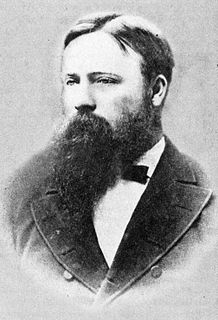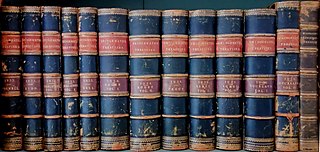
Oliver Wolf Sacks, was a British neurologist, naturalist, historian of science, and writer. Born in Britain, Sacks received his medical degree in 1958 from The Queen's College, Oxford, before moving to the United States, where he spent most of his career. He interned at Mount Zion Hospital in San Francisco and completed his residency in neurology and neuropathology at the University of California, Los Angeles (UCLA). After a fellowship at the Albert Einstein College of Medicine, he served as neurologist at Beth Abraham Hospital's chronic-care facility in the Bronx, where he worked with a group of survivors of the 1920s sleeping sickness encephalitis lethargica, who had been unable to move on their own for decades. His treatment of those patients became the basis of his 1973 book Awakenings, which was adapted into an Academy Award-nominated feature film in 1990, starring Robin Williams and Robert De Niro.
The New York Review of Books is a semi-monthly magazine with articles on literature, culture, economics, science and current affairs. Published in New York City, it is inspired by the idea that the discussion of important books is an indispensable literary activity. Esquire called it "the premier literary-intellectual magazine in the English language." In 1970 writer Tom Wolfe described it as "the chief theoretical organ of Radical Chic".

Mary Beatrice Midgley was a British philosopher. A senior lecturer in philosophy at Newcastle University, she was known for her work on science, ethics and animal rights. She wrote her first book, Beast and Man (1978), when she was in her late fifties, and went on to write over 15 more, including Animals and Why They Matter (1983), Wickedness (1984), The Ethical Primate (1994), Evolution as a Religion (1985), and Science as Salvation (1992). She was awarded honorary doctorates by Durham and Newcastle universities. Her autobiography, The Owl of Minerva, was published in 2005.

David Rolfe Graeber was an American anthropologist and anarchist activist. His influential work in economic anthropology, particularly his books Debt: The First 5,000 Years (2011) and Bullshit Jobs (2018), and his leading role in the Occupy movement, earned him recognition as one of the foremost anthropologists and left-wing thinkers of his time.

The Expression of the Emotions in Man and Animals is Charles Darwin's third major work of evolutionary theory, following On the Origin of Species (1859) and The Descent of Man (1871). Initially intended as a chapter in The Descent of Man, The Expression grew in length and was published separately in 1872. This book concerns the biological aspects of emotional life, and Darwin explores the animal origins of such human characteristics as the lifting of the eyebrows in moments of surprise and the raising of the upper lip in an aggressive sneer. A German translation of The Expression appeared in 1872; Dutch and French versions followed in 1873 and 1874. A second edition of the book, with only minor alterations, was published in 1890. Since its first publication, The Expression has never been out of print, but it has also been described as Darwin's "forgotten masterpiece".

Chauncey Wright was an American philosopher and mathematician, who was an influential early defender of Darwinism and an important influence on American pragmatists such as Charles Sanders Peirce and William James.

Laura Kipnis is an American cultural critic and essayist. Her work focuses on sexual politics, gender issues, aesthetics, popular culture, and pornography. She began her career as a video artist, exploring similar themes in the form of video essays. She is professor of media studies at Northwestern University in the Department of Radio-TV-Film, where she teaches filmmaking. In recent years she has become known for debating sexual harassment and free speech policies in higher education.

David Eagleman is an American neuroscientist, author, and science communicator. He teaches neuroscience at Stanford University and is CEO and co-founder of Neosensory, a company that develops devices for sensory substitution. He also directs the non-profit Center for Science and Law, which seeks to align the legal system with modern neuroscience and is Chief Science Officer and co-founder of BrainCheck, a digital cognitive health platform used in medical practices and health systems. He is known for his work on brain plasticity, time perception, synesthesia, and neurolaw.

The Bridgewater Treatises (1833–36) are a series of eight works that were written by leading scientific figures appointed by the President of the Royal Society in fulfilment of a bequest of £8000, made by Francis Henry Egerton, 8th Earl of Bridgewater, for a work on "the Power, Wisdom, and Goodness of God, as manifested in the Creation." Despite being voluminous and costly, the series was very widely read and discussed, becoming one of the most important contributions to the Victorian literature on the relationship between religion and science. They made such an impact that Charles Darwin began On the Origin of Species with a quotation from the Bridgewater Treatise of William Whewell.
On 19 October 2006, the Royal Institution of Great Britain named the 1975 short story collection The Periodic Table, by Primo Levi, the best science book ever. After taking nominations from many scientists in various disciplines, authors, and other notable people, the Royal Institution compiled a shortlist of books for consideration. This shortlist was presented to the public at an event held at Imperial College and the audience voted to determine which book was "the best."

The Oxford Book of Modern Science Writing is an anthology of scientific writings, arranged and introduced by Richard Dawkins of the University of Oxford. Published first in March 2008, it contains 83 writings on many topics from a diverse variety of authors, which range in length from one to eight pages. All inclusions are dated post-1900, and include poetry, anecdotes, and general philosophical musings.
Joan Snyder is an American painter from New York. She is a MacArthur Fellow, a Guggenheim Fellow, and a National Endowment for the Arts Fellow (1974).

Taiye Selasi is a British-American writer and photographer. Of Nigerian and Ghanaian origin, she describes herself as a "local" of Accra, Berlin, New York and Rome.
A Man of Misconceptions: The Life of an Eccentric in an Age of Change is a biography written by John Glassie about Athanasius Kircher, a 17th-century German Jesuit scholar, scientist, author, and inventor. Published by Riverhead Books in 2012, it is regarded by The New York Times as the first general-interest biography of Kircher, who has experienced a resurgence of academic attention in recent decades.

Patricia Lockwood is an American poet, novelist, and essayist. Her 2021 debut novel, No One Is Talking About This, won the Dylan Thomas Prize. Her 2017 memoir Priestdaddy won the Thurber Prize for American Humor. Her poetry collections include Motherland Fatherland Homelandsexuals, a 2014 New York Times Notable Book. Since 2019, she has been a contributing editor for The London Review of Books.

Laura J. Snyder is an American historian, philosopher, and writer. She is a Fulbright Scholar, is a Life Member of Clare Hall, Cambridge, was the first Leon Levy/Alfred P. Sloan fellow at The Leon Levy Center for Biography at The Graduate Center, CUNY, and is the recipient of an NEH Public Scholars grant. She writes narrative-driven non-fiction books including, most recently, Eye of the Beholder: Johannes Vermeer, Antoni van Leeuwenhoek, and the Reinvention of Seeing, which won the Society for the History of Technology's 2016 Sally Hacker Prize. In 2019, Snyder signed a contract with A. A. Knopf to author a biography of Oliver Sacks, based on exclusive access to the Sacks archive. Snyder also writes for The Wall Street Journal. She lives in New York City, where she was a philosophy professor at St. John's University for twenty-one years.

Gang Leader for a Day: A Rogue Sociologist Takes to the Streets is a memoir written by Sudhir Venkatesh. The book chronicles the life of the urban poor and explores Venkatesh's views on poverty, money, gangs, drugs, and life in Chicago. In 2017, it was reported that AMC Networks would be developing a drama series adapted from the book.

Insomniac City: New York, Oliver, and Me is a 2017 memoir by writer and photographer Bill Hayes, primarily recounting his life in New York City and his romantic relationship with neurologist and writer Oliver Sacks over the last seven years of Sacks' life. The book is composed of vignettes narrated in prose, interspersed with poetry and diary entries, and is illustrated with Hayes' photographs.

William Brooke Hayes is an American non-fiction writer and photographer. He has written five books – Sleep Demons, Five Quarts, The Anatomist, Insomniac City and Sweat – and has produced one book of photography, How New York Breaks Your Heart. His freelance writing has appeared in a number of periodicals, most notably The New York Times.

The Secret Lives of Colour is a 2016 non-fiction book by British writer Kassia St. Clair which explores the cultural and social history of colours. The book, which is based on a column St. Clair writes for British magazine Elle Decoration, is organized in a series of chapters by color, arranged from white to black. Each chapter is composed of short, two to four page, essays on different shades of its respective color, discussing an interesting aspect of science, history, art, or culture relating to the shade. There are a total of 75 essays in the book. Each page is bordered by a stripe of the color it discusses for easy visual identification, even when the book is closed.
















